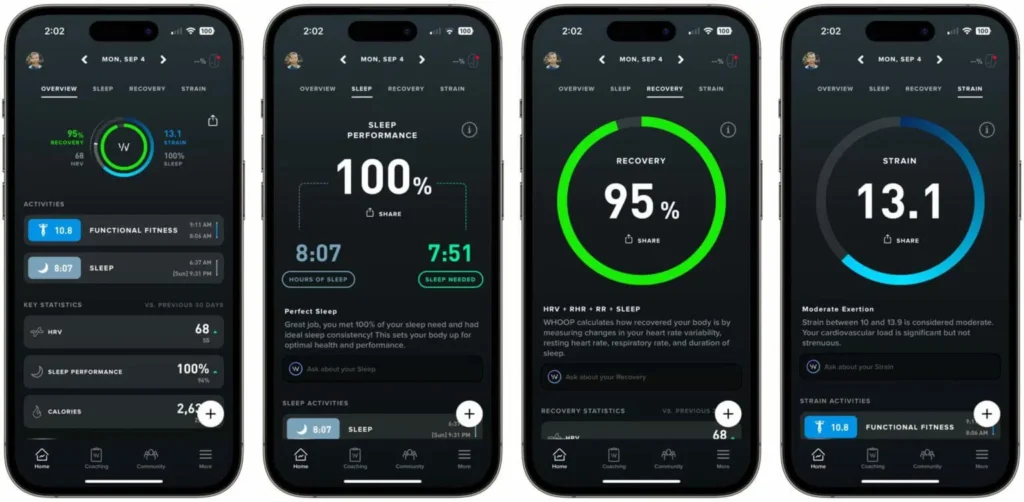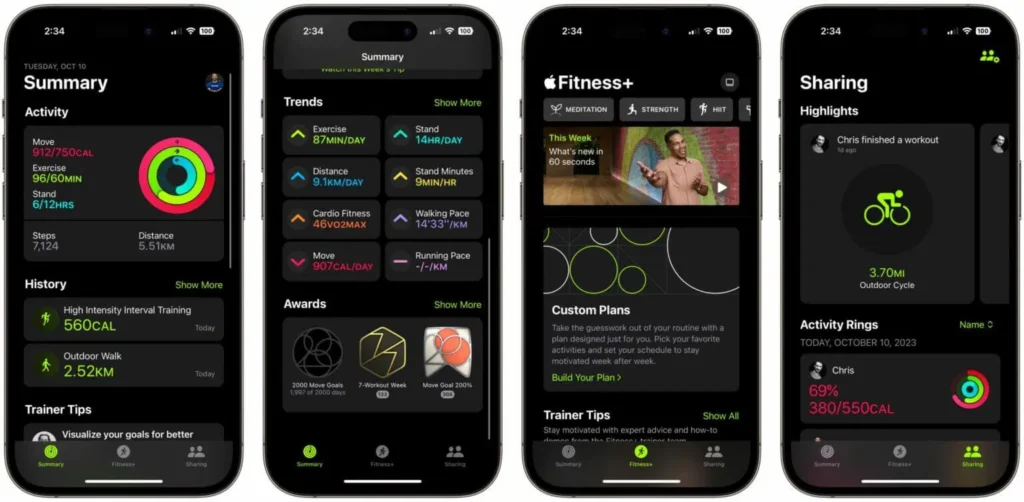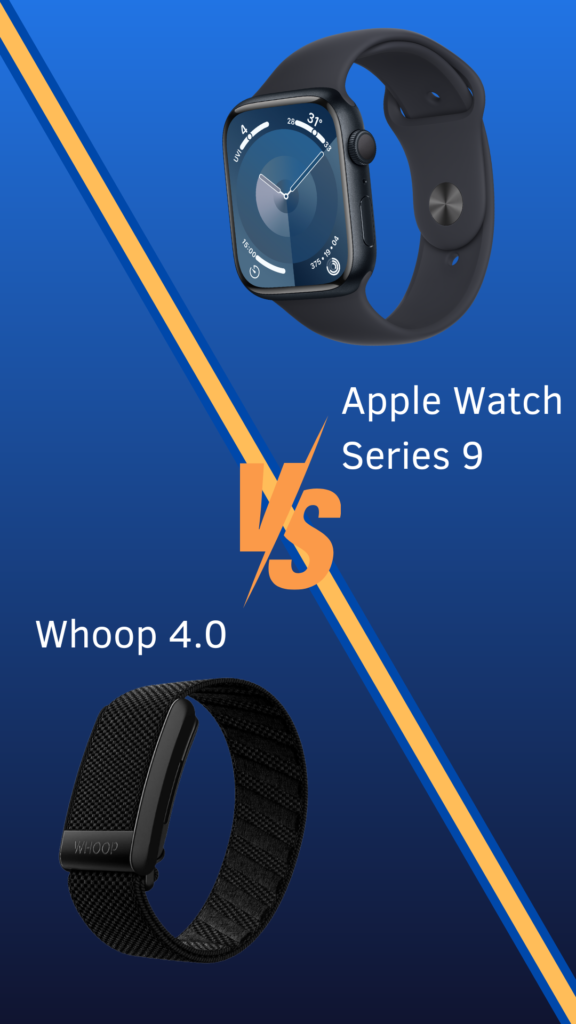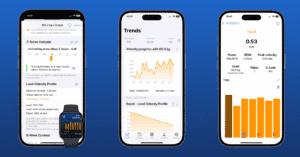When it comes to wearable fitness and health trackers, the Apple Watch Series 9 and the Whoop 4.0 are among the top contenders. Both devices offer a range of features tailored to different user needs, from casual fitness enthusiasts to serious athletes. This article provides a detailed comparison of these two wearables, highlighting why the Apple Watch might be the more attractive option for most users, especially with the new updates in watchOS 11 and the potential for app integration.
DOWNLOAD SPLEEFT APP NOW FOR PHONE, MAC AND WATCH!
Apple Watch vs Whoop
Design and User Experience


Apple Watch Series 9:
- Design: Sleek and customizable, available in various models and sizes. Users can choose from numerous watch faces and bands to match their style.
- Display: Features an OLED touchscreen, offering a responsive and vibrant user interface.
- Functionality: Doubles as a smartwatch with capabilities for notifications, calls, and other smartphone functions.
Whoop 4.0:
- Design: Minimalistic and functional, focusing on comfort and continuous wear. It lacks a display, relying on a companion app for all interactions.
- User Experience: Designed for serious athletes, it emphasizes fitness and health metrics over general smartwatch features. The lack of a display means users must use the app for all data.
Health and Fitness Tracking

Apple Watch Series 9:
- Health Features: Advanced tracking including ECG, blood oxygen monitoring, sleep tracking, and heart rate alerts. With watchOS 11, it also includes a temperature sensor for menstrual cycle tracking and emotional awareness insights.
- Fitness Tracking: Comprehensive workout tracking with various metrics available through the native Workout app and third-party apps like Spleeft, which turns the Apple Watch into a barbell velocity tracker.
- Integration: Seamlessly integrates with Apple’s ecosystem, including Fitness+ for guided workouts and the extensive range of health apps available on the App Store.
Whoop 4.0:
- Health Features: Continuous monitoring of heart rate, respiratory rate, blood oxygen, skin temperature, and sleep. It offers detailed recovery and strain metrics to optimize performance and recovery.
- Fitness Tracking: Focuses on heart rate and strain during workouts, with integration for apps like Strava for GPS tracking. However, it lacks features like step counting and comprehensive workout metrics found on the Apple Watch.
- User Guidance: Provides personalized recommendations for recovery and performance optimization based on detailed physiological data.
Battery Life
Apple Watch Series 9:
- Battery Life: Offers 16–28 hours of battery life, depending on usage. Daily charging is typically required.
Whoop 4.0:
- Battery Life: Superior battery life of up to 5 days, thanks to its lack of a display and continuous focus on physiological monitoring.
Pricing and Cost
Apple Watch Series 9:
- Cost: Higher upfront cost, with prices starting at $399. No ongoing subscription fees unless users subscribe to additional services like Apple Fitness+.
Whoop 4.0:
- Cost: Lower initial cost for the device, but operates on a subscription model ranging from $18 to $30 per month. Over time, the subscription can add up, making it a potentially more expensive option in the long run.
Benefits of Using Spleeft with Your Apple Watch As Barbell Velocity Tracker

Spleeft App: Spleeft transforms the Apple Watch into a powerful velocity tracker and barbell velocity tracker, adding unique functionalities that are not available on Whoop.
Comprehensive Velocity Tracking:
Spleeft offers precise measurements of barbell velocity and jump height in real-time using just your phone or Apple Watch. This makes it an essential tool for athletes focused on velocity based training, helping to optimize performance and track progress accurately.
Advanced Analytics in One of The Best Apple Watch Fitness Apps:
The app includes detailed analytics features such as best-rep velocity for given loads and exercises, load-velocity profiles, and power-load profiles. These metrics are crucial for understanding and improving performance over time, making Spleeft one of the best Apple Watch fitness apps available.
Seamless Integration:
As a health app for Apple Watch, Spleeft integrates seamlessly with the device’s existing health and fitness ecosystem. Users can easily track and analyze their workouts alongside other health data collected by the Apple Watch, providing a holistic view of their fitness journey.
Customizable and User-Friendly:
Spleeft allows users to configure their workout settings to match their specific training needs. Whether you’re focusing on strength, power, or endurance, the app adjusts to provide the most relevant data, enhancing the utility of your Apple Watch as a comprehensive fitness tool.
Cost-Effective:
Unlike Whoop, which operates on a more expensive subscription model, Spleeft has a much more affordable subscription. This makes it a more cost-effective option in the long run, especially for users who are already invested in the Apple ecosystem.
By leveraging Spleeft’s capabilities, users can turn their Apple Watch into a sophisticated barbell velocity tracker, enhancing their training regimen and gaining insights normally only available through specialized equipment.
Is It Better to Use Health Apps for Apple Watch or Whoop?
Both the Apple Watch Series 9 and the Whoop 4.0 have their strengths, but for most users, the Apple Watch offers a more versatile and comprehensive package. So they prefer to use health apps for Apple Watch. Its ability to integrate with various apps, including Spleeft, and its continuous updates make it a future-proof investment. Whether you are looking for a reliable fitness tracker, a health monitor, or a versatile smartwatch, the Apple Watch stands out as the superior choice.
By incorporating features from both devices, the Apple Watch with Spleeft and other apps can match or even surpass the functionality of Whoop, making it the best option for those who want a single device for all their health, fitness, and daily needs.





